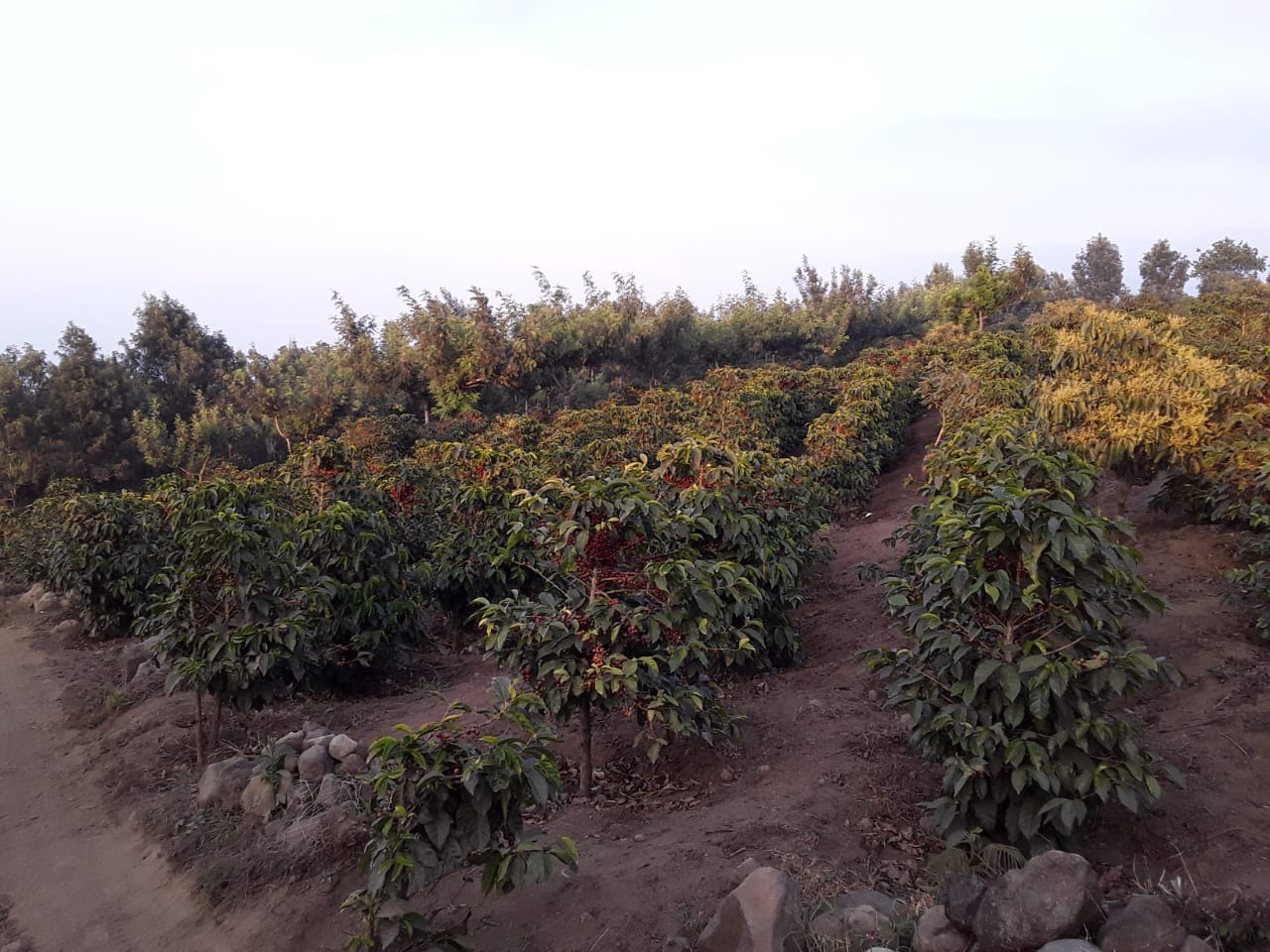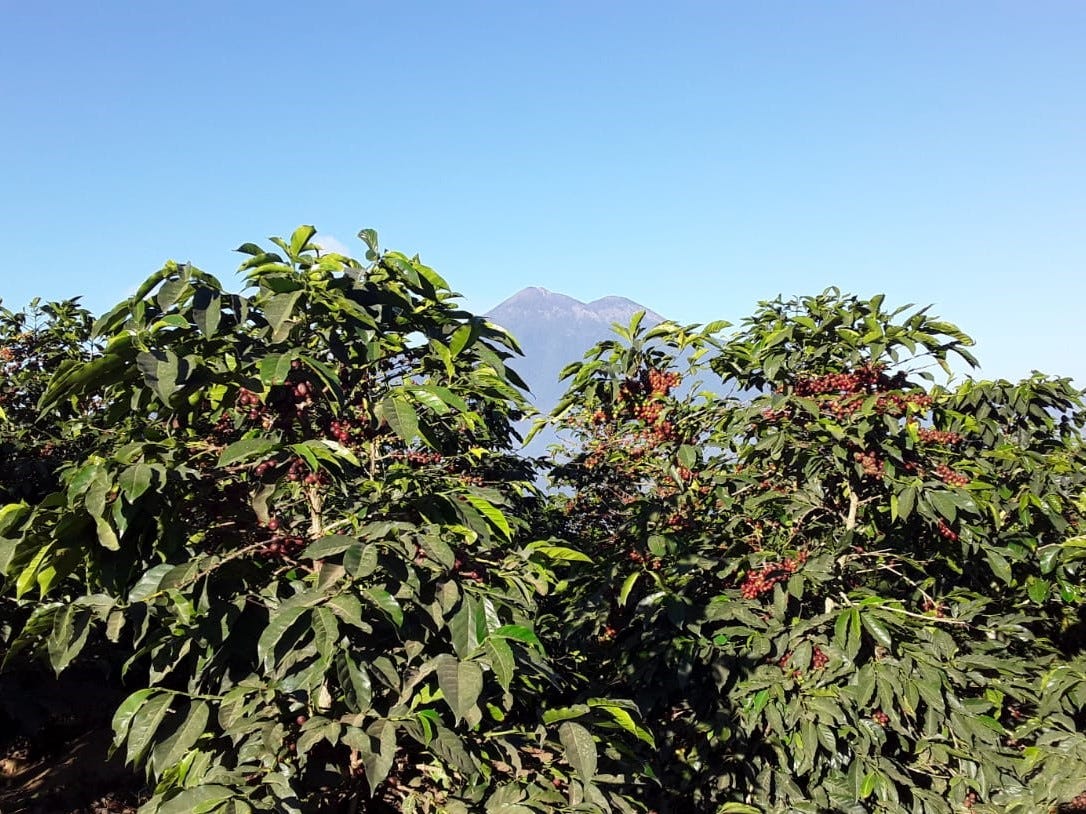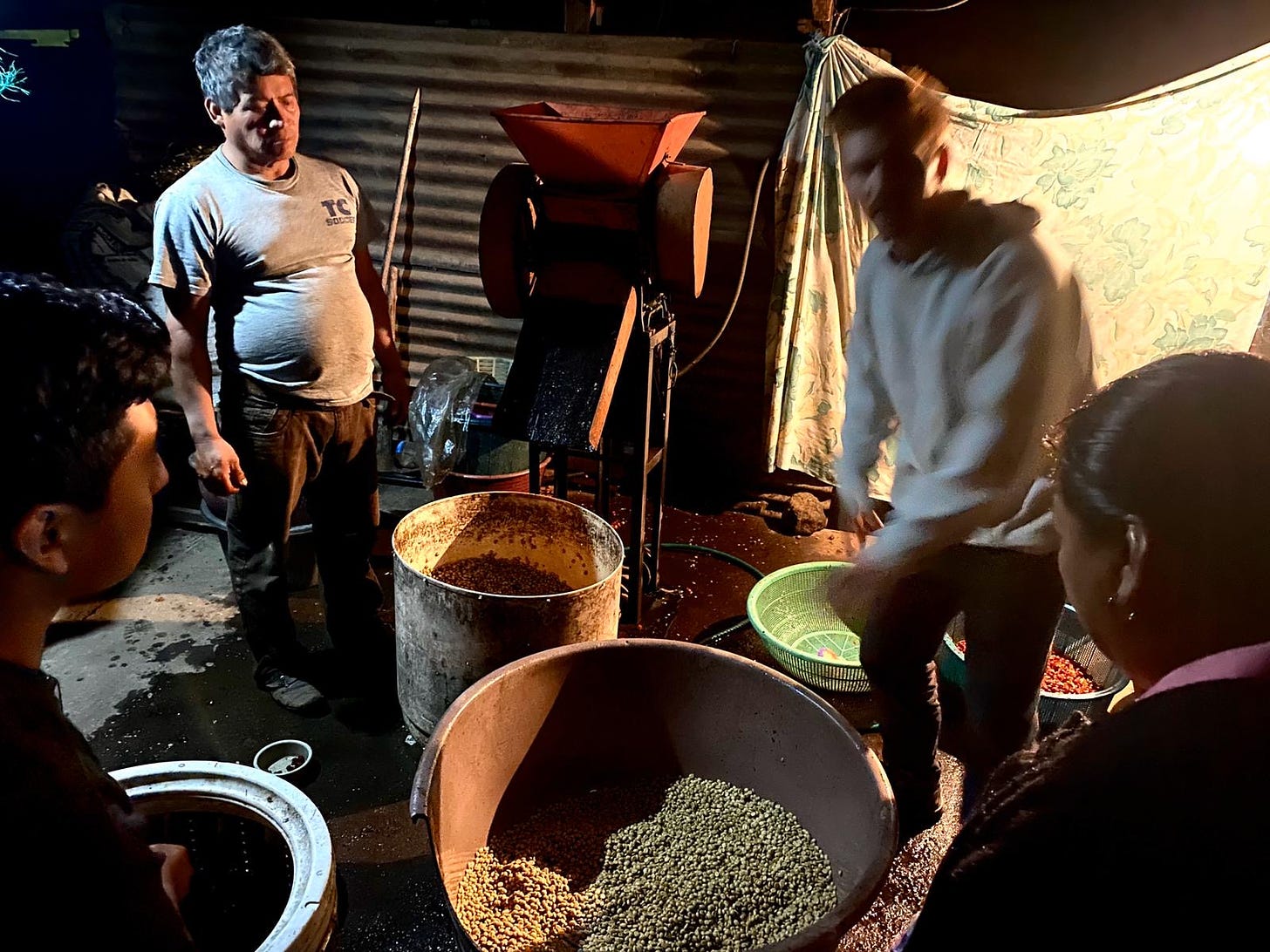Biota Coffee was born as an attempt to answer a straightforward but confounding question:
“What would happen if a coffee farmer were to convert their land from ‘conventional,’ chemical-based agriculture to an organic, agroecological, even regenerative system?”
I’ve been unpacking this question since I first began working with coffee farmers in Latin America in 2014. The mission back then was– and continues to be– to help smallholders improve the quality of their coffee, connect them with roasters willing to pay a premium for better quality, and thus improve the farmers’ bottom line.
The results of this work have been profound and humbling. None of the farmers I’ve partnered with have gotten rich off of their stewardship, but many have achieved enough financial stability to build a modest house instead of a shack, or buy a toilet rather than an outdoor latrine, or send a child to school, giving them hope for a better life than that farmer grew up with.
Yet back then, when it came to the topic of “conventional” (chemical-based) agriculture versus organic agriculture, the response was always the same: we’d like to not use chemicals, but if we did, our yields would fall so far that we wouldn’t be able to survive; furthermore, we would be vulnerable to plant diseases like coffee leaf rust which could completely wipe out our crop.
In effect, the idea was to first focus on farmer economic stability, then tackle the environmental question.
The increasing severity and clarity about our planet’s climate and biodiversity crisis, however, has caused many of us to rethink this incremental approach. It seems that every day we receive dire warnings from scientists that greenhouse gas concentrations are climbing too fast, weather patterns are changing, and ecosystems are collapsing. Coffee farmers themselves feel this most acutely– rainfall patterns have shifted, it’s gotten hotter, it’s gotten drier.
This puts their livelihoods at risk from a new direction, one which cannot be addressed by the application of more fertilizers.
In fact, evidence increasingly demonstrates how the traditional dichotomy between farmer livelihoods and ecologically-conscious agriculture is false: chemical fertilizers leave behind salts in the soil that make it harder for plants to uptake water; toxic herbicides and pesticides kill microorganisms in the soil which store water and nutrients in plant-available forms.
Globally, it is also increasingly clear that industrial agriculture, which relies on chemical inputs, plowing, and tillage, is not only more vulnerable to a changing climate but is also a direct contributor to greenhouse gas emissions. Ripping up native flora to plant tightly-spaced rows of coffee releases carbon out of the soil and into the atmosphere. Conversely, rich, undisturbed soils are adept at absorbing atmospheric carbon and storing it below ground.

Yet the problem of yields remains a confounding one. For large haciendas comprising hundreds or even thousands of hectares of land, whose owners might live far away in the city, or even might be owned by corporations, the problem is impersonal, abstract– hire fewer workers, cut costs, open new land to exploitation.
For smallholders, the problem is immediate and directly linked to their ability to feed their families.
I’ve heard so many stories from coffee farmers who themselves tried to go organic, or know someone who has tried, and their plants immediately ceased to produce fruit. Within a year, the farmer was forced to go back to the fertilizers or risk going bankrupt. Even though farmers recognize that they are stuck on a chemical treadmill - whereby they must use increasingly potent pesticides - they cannot risk trying to break out of it.
Nevertheless, there are abundant cases, both in coffee and with other crops, in which yields actually increase after transitioning away from toxic chemical use. This makes intuitive sense: like plants, humans have certain nutritional requirements of proteins, carbohydrates, and minerals. But a person consuming strictly powdered supplements and vitamins would never achieve the same overall health as someone consuming a whole foods-based diet.
Furthermore, in a diverse, agroecological setting, coffee can grow underneath harvestable timber and alongside a variety of specialty fruit or nut trees. Therefore, farmers implementing these agroforestry systems can diversify their income sources while decreasing their reliance on coffee as their sole source of livelihood.
A more natural approach to farming only seems less efficient when analyzed through the lens of short-term yield maximization, which industrial agriculture seeks to achieve through chemical inputs and economies of scale.
Yet when we take a more holistic accounting of each system, it is hard to argue that, over the long run, chemical-based agriculture produces better outcomes.
Finally, we should recognize the relationship between the world’s climate crisis and the quality of the world’s coffee supply. Unpredictable climate changes are already disrupting farmers’ ability to grow coffee, much less grow coffee well, and these changes will only get more acute in the near future.
I would argue that this trend is more than a trivial one only relevant for “connoisseurs.” Anyone who's tried the difference between generic, grocery store produce and locally-grown, heirloom fruits and vegetables know that there is a huge difference in flavor, texture, nutrient-density, and overall satisfaction that the latter provides.
Our sense of taste and smell is our first and most direct connection with the earth. The richness of its fruits is a result of the richness of its soils and the biome in which it grows. When we move from diversity to homogeneity, we move from full-color to black-and-white flavors.
The world’s best coffee can only come from the healthiest plants, and the healthiest plants can only be grown in the healthiest soils.
This, then, informs the three key questions that we set out to answer with Biota Coffee:
How can farming heal soils and improve climate resiliency?
What are the economics of regenerative coffee production?
What does the world’s most sustainable coffee taste like?
We don’t claim to have the answers to these questions...yet. There are many coffee farms around the world doing excellent work growing coffee in a holistic, sustainable fashion, but there is still a knowledge gap that prevents the average farmer from stepping off of the chemical treadmill and onto the path of regeneration. This gap is what Biota seeks to fill.
Biota is an active investigation into how small coffee farmers can transition away from conventional agriculture and toward a new, regenerative form of agriculture. Biota is a rejection of old ways of thought and a search for new solutions. Biota is a quest for the world’s best coffee; Biota is praxis.
Bi·o·ta /noun/ the animal and plant life of a particular region, habitat, or geological period.





